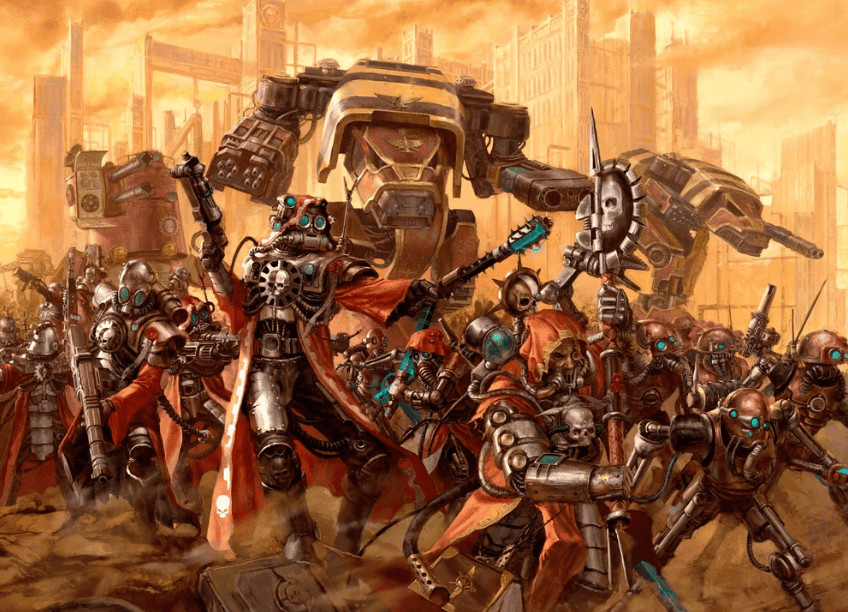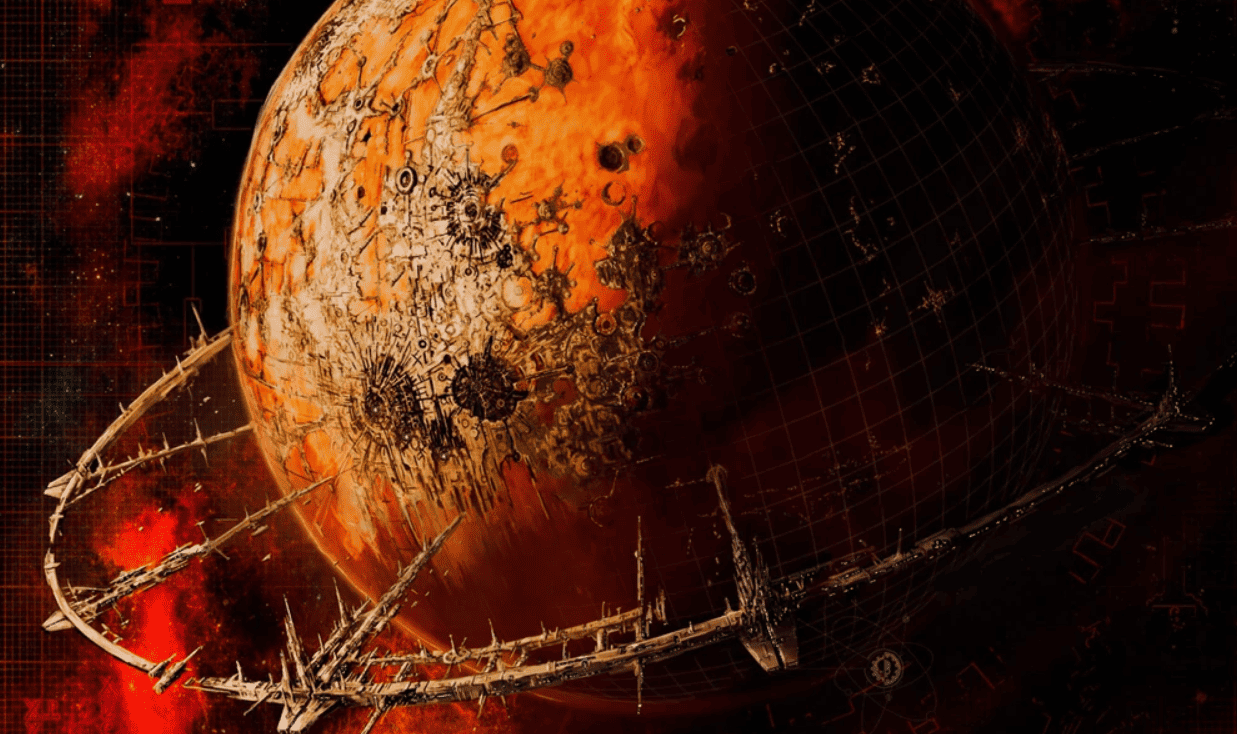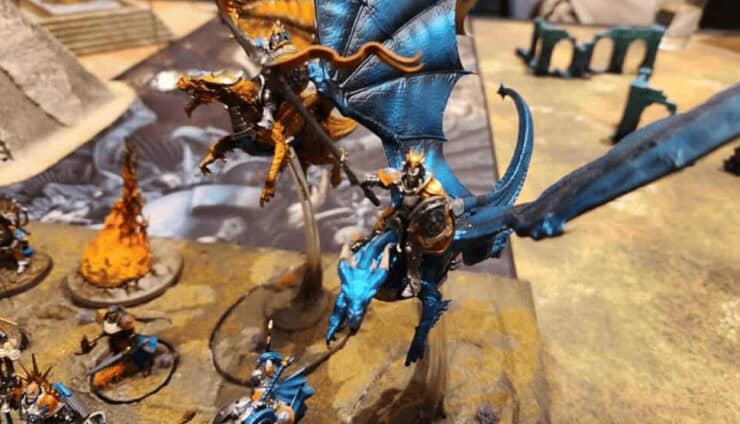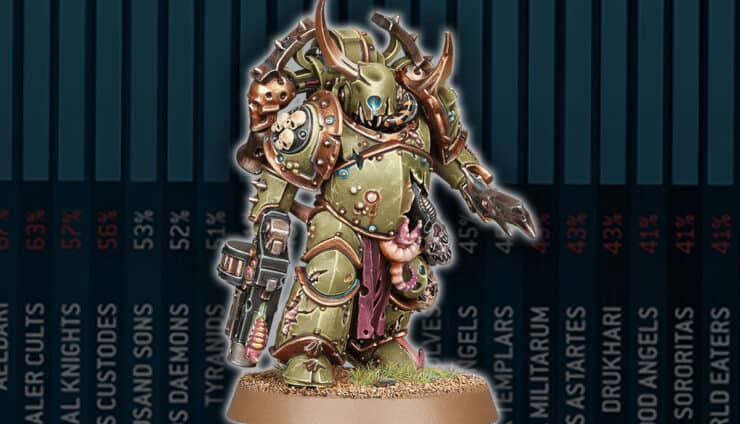Unearth the truth of the Noctis Labyrinth (Labyrinth of Night), the Dragon of Mars, and the hidden mysteries beneath the Martian surface in the Warhammer 40k universe.
Unveiling the Noctis Labyrinth: Mars’ Secret Tunnels & the Dragon of Mars in Warhammer 40k

- Unraveling the Noctis Labyrinth in Warhammer 40k Lore
- What Is the Noctis Labyrinth?
- The Dragon of Mars on the Noctis Labyrinth in 40k: Truth or Myth?
- The Real-Life Inspiration Behind the Noctis Labyrinth
- Why Is the Noctis Labyrinth Important in Warhammer 40k?
- The Future of the Noctis Labyrinth in Warhammer 40k
The Dragon of Mars on the Noctis Labyrinth in 40k: Truth or Myth?
The C’tan Mag’ladroth and His Connection to the Noctis Labyrinth

The Legend of Mag’ladroth, the Void Dragon
The Imprisoned C’tan Beneath Mars’ Surface

So, how did this stellar dragon end up in a Martian jail cell? Well, it wasn’t just anyone who put him there. It was none other than the Emperor of Mankind Himself during the Age of Strife. And when the Emperor locks something up, He means business. The story goes that the Dragon of Mars was rampaging across the galaxy (way pre-40k), being a general cosmic nuisance, when Big E swooped in, defeated him, and stuffed him beneath Mars like a teenager hiding dirty laundry before their parents came home. Since then, the Dragon’s been sleeping, presumably plotting his escape.
But what’s the Void Dragon got to do with the Mechanicus? Oh, just everything. Many speculate that the machine cult’s obsession with technology—and their uncanny knack for creating it—might come from none other than the Dragon’s influence if this C’tan is truly the being behind their technological prowess that makes him one of the most significant figures in the Mechanicus’ history, even if he’s technically on a forced vacation.
- Games Workshop - Warhammer 40,000 - Necrons: CTan Shard Of The Void Dragon
- Plastic miniatures - require assembly and painting - paints and tools not included, 99120110054
- 99120110054, Games Workshop - Warhammer 40.000 - Hals: CTan Shard Of The Leid Dragon
- Plastic miniaturen - vereisen montage en schilderen - verf en gereedschap niet inbegrepen, Games Workshop - Warhammer 40,000 - Necrons: CTan Shard Of The Void Dragon
- Plastic miniatures - require assembly and painting - paints and tools not included, Games Workshop - Warhammer 40.000 - Necroni: Frammento di CTan del Drago del Vuoto, ウォーハンマー 40000 のミニチュアプラモデル, Games Workshop - Warhammer 40.000 - Necrones: CTan Shard Of The Void Dragon
Last update on 2025-05-15 / Affiliate links / Images from Amazon Product Advertising API
Guardians of the Dragon of Mars in 40k
Dalia Cythera and Ro-Mu 31: The Emperor’s Chosen
Now, if you’ve got a being like the Void Dragon locked up under your planet, you’re going to want some top-notch security. Enter Dalia Cythera and Ro-Mu 31. These two aren’t just your average Mechanicus tech-priests or Martian nobodies—they’re the chosen guardians of the Void Dragon, a position that’s as mysterious as it is prestigious.
Dalia Cythera, a seemingly ordinary Terran girl, and Ro-Mu 31, an ancient Mechanicum Protector, were handpicked by the Emperor to keep an eye on Mag’ladroth. And get this—they’ve been at it since the Schism of Mars. That’s a long time to stand guard, but they’re what the Warhammer 40k universe calls “Perpetuals,” meaning they’ve been granted unnaturally long lives. While everyone else on Mars is aging or augmenting themselves into oblivion, these two keep watching over the imprisoned dragon, making sure he doesn’t decide to stretch his wings.
But why them? Why a seemingly random girl from Terra and a weathered protector? That’s one of the big questions that keeps 40k fans guessing. Maybe the Emperor saw something in Dalia and Ro-Mu that made them perfect for the job. Or maybe the truth of their prolonged existence and their connection to the Emperor’s grand design is something far more complex. Either way, it’s safe to say that they’ve got their hands full.
The Real-Life Inspiration Behind the Noctis Labyrinth
Mars’ Labyrinth of Night: A Scientific Wonder

Noctis Labyrinthus (Labyrinth of Night): Mars’ Geological Formation
How Volcanism and Faulting Shaped the Labyrinth of Night on Mars

The name “Noctis Labyrinthus” translates to “Labyrinth of Night,” which is an absolutely perfect name for a region of Mars that looks like it was designed by someone playing a Martian version of Tetris. Some of these canyons are as deep as 6 kilometers (that’s 3.7 miles for those keeping track). This jagged landscape is a maze of grabens, which are basically long trenches formed by the planet’s crust cracking under pressure. And when you think about the dark and shadowy terrain of the Noctis Labyrinth in 40k, it’s easy to see where the inspiration came from.
To get a good look at this real-life Martian maze, the European Space Agency (ESA) sent the Mars Express to orbit the Red Planet. Using topographic data and fancy instruments, scientists have been mapping this intricate region. It’s no wonder the Warhammer 40k universe decided to take this raw, untamed wilderness and add a dash of terror to it. In the real world, it’s a geological marvel. In the 40k universe? It’s the stuff of nightmares.
The Intersection of Science and Warhammer 40k Lore
How Real Mars Features Inspire the Warhammer Universe
Warhammer 40k is famous for taking real-world science and cranking it up to 11. The Noctis Labyrinthus is no exception. While in reality, this Martian region is the result of volcanic and tectonic forces, in 40k, it’s a labyrinth hiding the Void Dragon, one of the C’tan—ancient cosmic entities with the power to devour stars. It’s a pretty wild jump, but that’s what makes 40k so fun.
The blend of fact and fiction is part of what makes the Noctis Labyrinth so compelling. The terrain might be real, but the horrors hidden beneath it are pure Warhammer 40k. By taking real geological formations like the volcanic activity that shaped Mars, 40k spins an ominous story around them. The fact that these valleys exist at all gives the lore an eerie sense of plausibility. Could an ancient being really be locked away under Mars’ surface? Who knows—after all, we’ve barely scratched the surface of Mars in real life.
Volcanic formations, dramatic rifts, and vast canyons all add to the mystique of the Noctis Labyrinth. When you take a place as remote and barren as Mars and add in the creative minds behind Warhammer, you end up with a perfect setting for a terrifying legend like the Void Dragon. The real and the imaginary collide, creating a universe where the only thing scarier than the terrain is the thought of what might be lurking beneath it.
Unraveling the Noctis Labyrinth in Warhammer 40k Lore

Nestled between the Valles Marineris and the Tharsis Uplands, it’s a place that blurs the lines between myth and madness. So, whether you’re new to the Warhammer universe or you’ve already faced down a daemon or two, let’s crack open the vault of secrets that is the Noctis Labyrinth.
Let’s get something straight—this isn’t just your average labyrinth. The Noctis Labyrinth is a tangled knot of history, deception, and terrifying truth that would make even the most devout member of the Adeptus Mechanicus break out in cold servo-fluid. Sure, Mars is known for its red dust and eerie silence, but beneath its surface, the Noctis Labyrinth hides something far more sinister: a C’tan known as the Void Dragon. And yes, this is the same Dragon of Mars you’ve heard whispers about in those shady Mechanicus halls.
But it’s not just the Dragon that makes this place tick. There’s a reason why every tech-priest worth their augmetic implants steers clear of this Martian nightmare zone. The Labyrinth itself seems to distort time and space—nothing good happens when you go in, and what you find is likely to make you question your place in the universe.
What Is the Noctis Labyrinth?

So what exactly is the Noctis Labyrinth? Picture this: Mars, a planet as red as a heretic’s sins, and in the middle of it all, a sprawling, yawning series of canyons and cracks that seem less like natural formations and more like the planet’s way of hiding its dirtiest secrets. Formed by ancient volcanic activity, these grabens (don’t worry, I had to look that up too) are supposedly uninhabitable, not just because of the rough terrain but because of the “contamination” left behind by the Age of Technology wars. At least, that’s what the Mechanicus wants you to believe.
Beneath the surface, though? That’s where things get weird. The Labyrinth is home to all manner of horrors, from ancient technologies that should have stayed buried to knowledge that has driven more than one mind utterly mad. Oh, and let’s not forget the nightmarish creatures that prowl the tunnels, just waiting for someone foolish enough to go poking around where they shouldn’t. You know, for extra fun.
The Origin of the Noctis Labyrinth in Warhammer 40k
Geology Meets Nightmare
Mars wasn’t always the forge world we know and fear today. Millions of years before humanity even set foot on its surface, the Noctis Labyrinth was born out of volcanic chaos. In true Warhammer fashion, these violent eruptions didn’t just leave behind canyons—they left behind history. During the Age of Technology, this region became a hotbed for mining operations, but when the Great Purge rolled around, it wasn’t just workers who lost their minds. The Adeptus Mechanicus claims the tunnels became contaminated by deadly radiation, hazardous biological agents, and generally nasty stuff that kills both man and machine. Or so they say.
Here’s where things get even shadier: many believe that this contamination is a fabrication. The Mechanicus, those sneaky bionic overlords, might have invented the whole story to keep nosy explorers from digging too deep. Because what’s really down there could rewrite what we know about Mars, humanity, and the universe. Hint: it’s got something to do with a certain star-eating space dragon.
Noctis Labyrinth Truth: What Lies Beneath Mars
Nightmares and Technologies Best Left Forgotten

There are stories of machines that think, old enough to predate the Imperium’s strict rules on AI, which are understandably terrifying in the hands of the wrong magos. There are vaults of knowledge that haven’t seen the light of day in millennia, guarded fiercely because they contain truths that could tear apart the Mechanicus itself. And let’s not forget the nightmares. The creatures that roam these tunnels aren’t just your average Martian wildlife—they’re horrors that make the Warp look like a picnic. Whether they’re failed experiments or something far older, no one can give a real truth, but one thing’s clear: there’s a reason the Noctis Labyrinth remains largely uninhabited.
For those brave (or stupid) enough to search for the truth, the Noctis Labyrinth offers no shortage of madness and maybe a nugget of knowledge and truth. Between the ancient technologies, forbidden knowledge, and the constant threat of creatures lurking in the shadows, anyone who ventures too far might just lose more than their mind—they might lose their very soul.
Why Is the Noctis Labyrinth Important in Warhammer 40k?
How the Labyrinth Shapes the History of the Adeptus Mechanicus and Mars

The Great Purge and the Age of Strife
Wars for Mars and the Control of Its Secrets
Long before the Imperium took control, during the Age of Technology, Mars was already a buzzing center of human advancement. Massive machines, powerful technologies, and futuristic innovations were being churned out faster than an Ork with a shiny new gun. But, as humanity tends to do, things went horribly wrong. The Age of Strife came knocking, and with it, civil wars that ravaged the planet. The Great Purge marked one of the bloodiest periods, where wars between the ancient Mechanicum and its opponents nearly wiped out all progress.
This is where the Noctis Labyrinth really enters the scene. According to Mechanicus legends, the labyrinth’s tunnels were contaminated with radiation, biological horrors, and who knows what else during these conflicts. Flesh, machine, it didn’t matter—everything that ventured too far into the labyrinth was destroyed or corrupted. Or so the stories go. Because, you see, the “contaminated” label? It’s likely a fabrication, a clever trick by the ruling magi to keep curious tech-priests far away from whatever it is that really lurks down there. Nothing like a good radiation scare to keep your secrets safe.
The Noctis Labyrinth, far from being just a hole in the ground, became a symbol of forbidden power—ancient, untapped, and dangerous. Whether it was the sleeping Dragon of Mars or lost technologies, the Mechanicus has always had a vested interest in keeping its mysteries under lock and key. After all, knowledge is power, and power is something they guard jealously.
The Future of the Noctis Labyrinth in Warhammer 40k
What’s Next for the Mars Labyrinth of Night?

Speculations on the Dragon’s Awakening
Will the Void Dragon Rise Again?
Let’s talk about the elephant (or rather, the dragon) in the room. The Void Dragon has been sleeping, but how long can a cosmic star-eater really stay down for the count? The big question on everyone’s mind is whether Mag’ladroth, the Void Dragon, will make his grand re-entrance into the galaxy, and if so, what that means for Mars and beyond.
Speculation among the Mechanicus suggests that his awakening would be catastrophic—like trying to wake up from a nap only to find your house on fire. If the Dragon rises again, Mars could become the epicenter of a power struggle unlike any other. Imagine a world torn between the forces of the Mechanicus, who want to either harness or destroy this ancient power, and the Imperium, desperate to prevent another C’tan running loose.
But what if the Mechanicus has already been subtly influenced by the Void Dragon? Some whispers suggest the Mechanicus’ obsession with technology might be more than just coincidence, but rather the lingering influence of a C’tan who never quite went to sleep in the first place. If he does wake up, we could see massive shifts in the power balance of the Imperium itself. Mars would no longer just be the forge world—it would be ground zero for a whole new kind of war.
Conclusion: The Enduring Mysteries of the Noctis Labyrinth

The Noctis Labyrinth, both in reality and in the Warhammer 40k universe, is a place of shadowy intrigue and endless mystery. In the real world, it’s a region shaped by ancient volcanic activity, a Martian puzzle waiting to be fully understood. In 40k, it’s a forbidden zone where time and reality twist and an ancient star-eating dragon waits for the right moment to wake up.
Whether you’re into the scientific wonder of Mars or the grimdark terror of Warhammer 40k, the Noctis Labyrinthus will continue to be a symbol of the unknown. It’s the kind of place where fact and fiction merge, where every shadow hints at a secret, and where the next discovery—real or imagined—could change everything.
All the Latest Warhammer Rules & Model Rumors
What do you think about the Warhammer 40k, The Noctis Labyrinth (Labyrinth of Night), the possible truth, the Dragon of Mars, and the hidden mysteries beneath the Martian surface in the Warhammer 40k universe?






